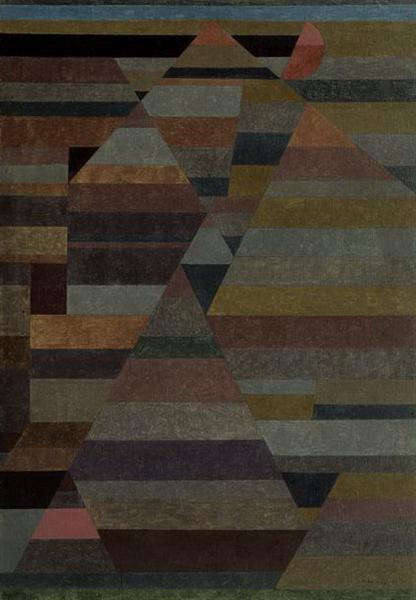Description
The "necropolis" painting of 1929, the work of the famous Swiss artist Paul Klee, is presented as a fascinating example of the fusion between abstraction and symbolic representation that characterizes much of his work. Klee, known for his distinctive style that integrates elements of expressionism and surrealism, achieves in this work a powerful evocation of deepest issues, such as death, memory and spirituality.
At first glance, the composition of "necropolis" displays an urban landscape of geometric shapes and vibrant colors that, in its apparent simplicity, invites a deeper reflection. Klee uses a palette that includes blue, yellow and warm oranges, creating a visual contrast that contributes both to the sense of depth and the vitality of the painting. The terrible tones and the Zigzag lines are intertwined, suggesting buildings that emerge from the background, referring to a kind of imaginary city that can be interpreted as a space of transcendence.
The characters, or rather the figures that are insinuated within the work, are not direct representations of human beings. Instead, Klee plays with the idea of abstract representation, where compound forms and vibrant colors suggest the existence of an urban life and, simultaneously, a spiritual life. This duality can be seen as a comment on the ephemeral nature of existence and the search for meaning in the midst of an environment that can be both oppressive and liberating.
One of the most intriguing aspects of "necropolis" is its ability to evoke an atmosphere of mystery. The way in which Klee articulates space creates a sense of depth in which the lines allude to roads and passages. The work not only portrays a city abstractly, but also evokes the idea of a beyond, a recurring characteristic in Klee's symbolism. The combination of rigid shapes with the softness of lines and colors suggests a tension between the physical and spiritual world.
The influence of primitive art and folklore becomes evident in this work, as in many Klee's creations. This dialogue with the ancestral adds a level of complexity to the visual experience, since the viewer looks, in some way, connected to stories and mythologies that transcend time and space. "Necropolis" is not simply a static representation, but a portal to a universe where multiple realities are intertwined.
In conclusion, "necropolis" stands out as a symbol of Paul Klee's innovative vision, who, through his unique style, transforms the landscape of a city into a poetic space where the tangible and the ethereal coexist. This work, like many of Klee's creations, continues to resonate in the contemporary context, inviting the viewer to explore the depths of their own existence in relation to the surrounding environment. His ability to capture and represent the inner world of the human being, with his fears and yearnings, assures "necropolis" a preeminent place in the history of modern art.
KUADROS ©, a famous paint on your wall.
Reproductions of paintings handmade oil, with the quality of professional artists and the distinctive seal of KUADROS ©.
Art reproduction service with satisfaction guarantee. If you are not completely satisfied with the replica of your painting, we refund your money 100%.

